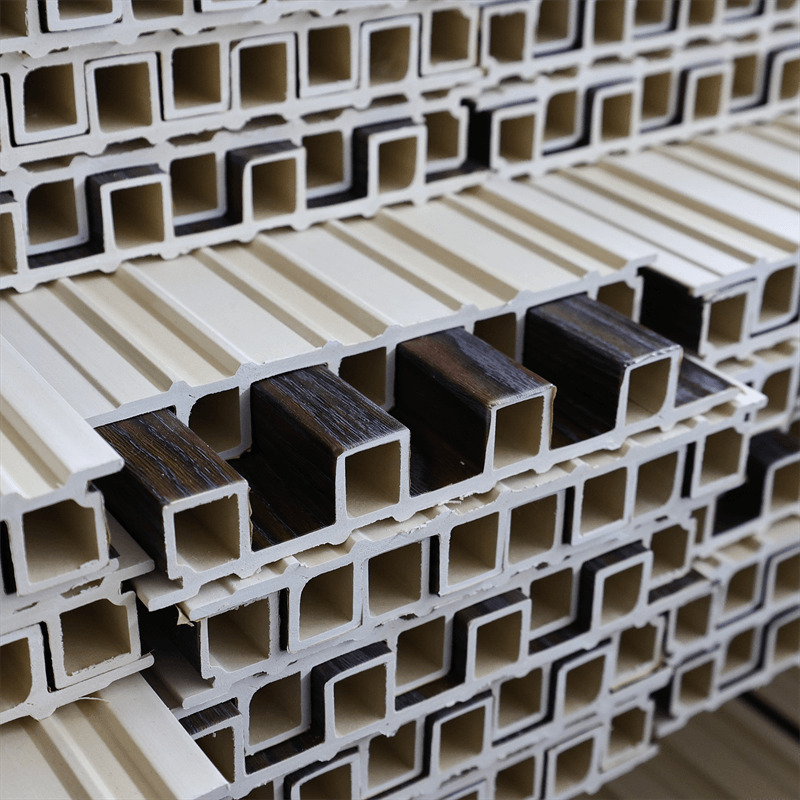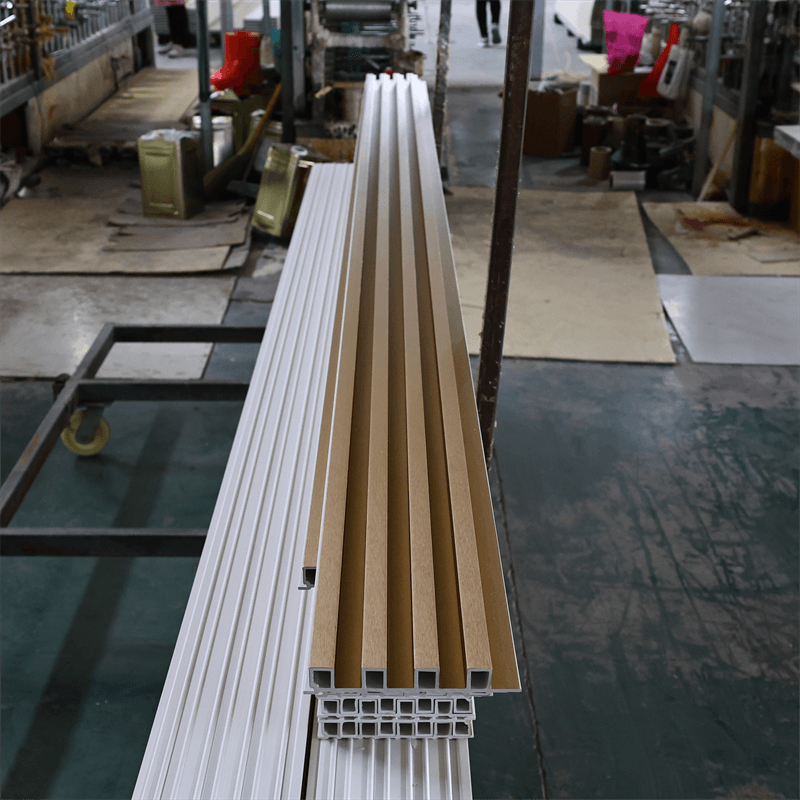In today’s world, the pursuit of sustainability has become paramount.
As we strive to reduce our environmental footprint and embrace eco-friendly practices, the choice of construction materials plays a significant role.
WPC (Wood-Plastic Composite) wall panels have emerged as a sustainable alternative to traditional materials.
This essay explores the use of WPC wall panels as a sustainable building material, discussing their composition, environmental benefits, applications, and future prospects.

I. Understanding WPC Wall Panels
WPC wall panels are composite materials made from a combination of wood fibers or flour and thermoplastics.
This blend creates a durable and versatile product that combines the natural aesthetics of wood with the strength and resilience of plastic.
The composition of WPC panels can vary, but they generally consist of around 60-70% wood fibers and 30-40% thermoplastics.
The resulting material offers numerous advantages over conventional building materials.
II. Environmental Benefits of WPC Wall Panels
- Reduced Resource Consumption: By utilizing wood fibers, WPC wall panels contribute to the conservation of natural resources. These panels minimize the reliance on virgin wood, reducing deforestation and promoting sustainable forestry practices. Additionally, the use of recycled or reclaimed wood fibers further enhances the environmental profile of WPC panels.
- Recycling and Reusability: WPC wall panels are designed to be recyclable at the end of their lifecycle. The panels can be ground up and reprocessed into new panels or other plastic products. This recyclability reduces the amount of waste sent to landfills and supports the circular economy principles.
- Lower Carbon Footprint: Compared to traditional materials like concrete or steel, the production of WPC wall panels generates a lower carbon footprint. The manufacturing process involves less energy consumption and emits fewer greenhouse gases. Furthermore, the use of recycled materials in WPC panels further reduces their environmental impact.
- Reduced Chemical Treatment: Unlike pressure-treated wood or other materials that require chemical treatment to resist pests and decay, WPC wall panels are naturally resistant to insects, fungi, and rot. This eliminates the need for toxic chemicals, making them safer for the environment and human health.
III. Applications of WPC Wall Panels
WPC wall panels find extensive applications in both residential and commercial construction projects. Some notable uses include:
- Interior Wall Cladding: WPC wall panels provide an attractive and sustainable solution for interior wall cladding. They offer a range of designs and finishes, allowing for versatile aesthetics that complement various interior styles. WPC panels enhance the visual appeal of spaces while maintaining a commitment to sustainability.
- Exterior Facades: WPC wall panels can also be used for exterior facades, offering durability, weather resistance, and low maintenance. Their resistance to moisture and temperature fluctuations makes them suitable for diverse climates. Additionally, the availability of different panel sizes and installation systems facilitates their integration into architectural designs.
- Commercial Spaces: WPC wall panels are widely employed in commercial spaces such as offices, hotels, restaurants, and retail establishments. These panels contribute to a sustainable and visually appealing environment, aligning with the eco-conscious values of businesses and attracting environmentally-conscious customers.
IV. Future Prospects and Innovations
The use of WPC wall panels is expected to grow in the future as sustainability continues to be a driving force in the construction industry.
Ongoing research and development aim to enhance the performance and sustainability of WPC materials.
Innovations include the incorporation of bio-based resins, further reducing the reliance on fossil fuel-derived plastics.
Additionally, advancements in manufacturing techniques and panel designs are improving the strength, durability, and aesthetic options of WPC panels.
WPC wall panels offer a sustainable alternative to traditional construction materials, showcasing the potential for a greener and more environmentally conscious future.
The reduced resource consumption, recycling potential, lower carbon footprint, and absence of chemical treatments make WPC panels an attractive choice for sustainable construction projects.
With their versatility, durability, and aesthetic appeal, WPC wall panels have found applications in various architectural settings.

As the demand for sustainable materials continues to rise, WPC panels are poised to play an increasingly significant role in creating a built environment that is both aesthetically pleasing and environmentally responsible.
By embracing WPC wall panels, we can contribute to a sustainable future while reaping the benefits of a durable and eco-friendly construction material.
In conclusion, WPC wall panels represent a significant step forward in the pursuit of sustainability within the construction industry.
These panels offer a range of environmental benefits, including reduced resource consumption, recyclability, lower carbon footprint, and the elimination of chemical treatments.
By incorporating WPC panels into building projects, we can actively contribute to the preservation of natural resources, reduction of waste, and mitigation of greenhouse gas emissions.
The versatility and durability of WPC wall panels make them suitable for various applications, from interior wall cladding to exterior facades in both residential and commercial settings.
Their aesthetic appeal and wide range of design options ensure that sustainable construction does not compromise on style or functionality.
Looking ahead, the future of WPC panels holds even more promise.
Ongoing research and development efforts are focused on further improving their performance, sustainability, and incorporating innovative materials.
As technology advances, we can expect to see bio-based resins and other eco-friendly components integrated into WPC panel production, enhancing their environmental credentials.
By choosing WPC wall panels, we are not only making a conscious effort to minimize our ecological impact but also setting a precedent for sustainable construction practices.
As more architects, builders, and homeowners embrace these sustainable materials, we can collectively work towards a more environmentally responsible and resilient built environment.
In conclusion, WPC wall panels are paving the way for a sustainable future, where we can create aesthetically pleasing, durable, and eco-friendly spaces without compromising our commitment to the environment.
By incorporating these panels into our construction projects, we are making a positive impact on resource conservation, waste reduction, and the overall health of our planet.
It is up to us to embrace the potential of WPC wall panels and pave the way for a greener, more sustainable world.

